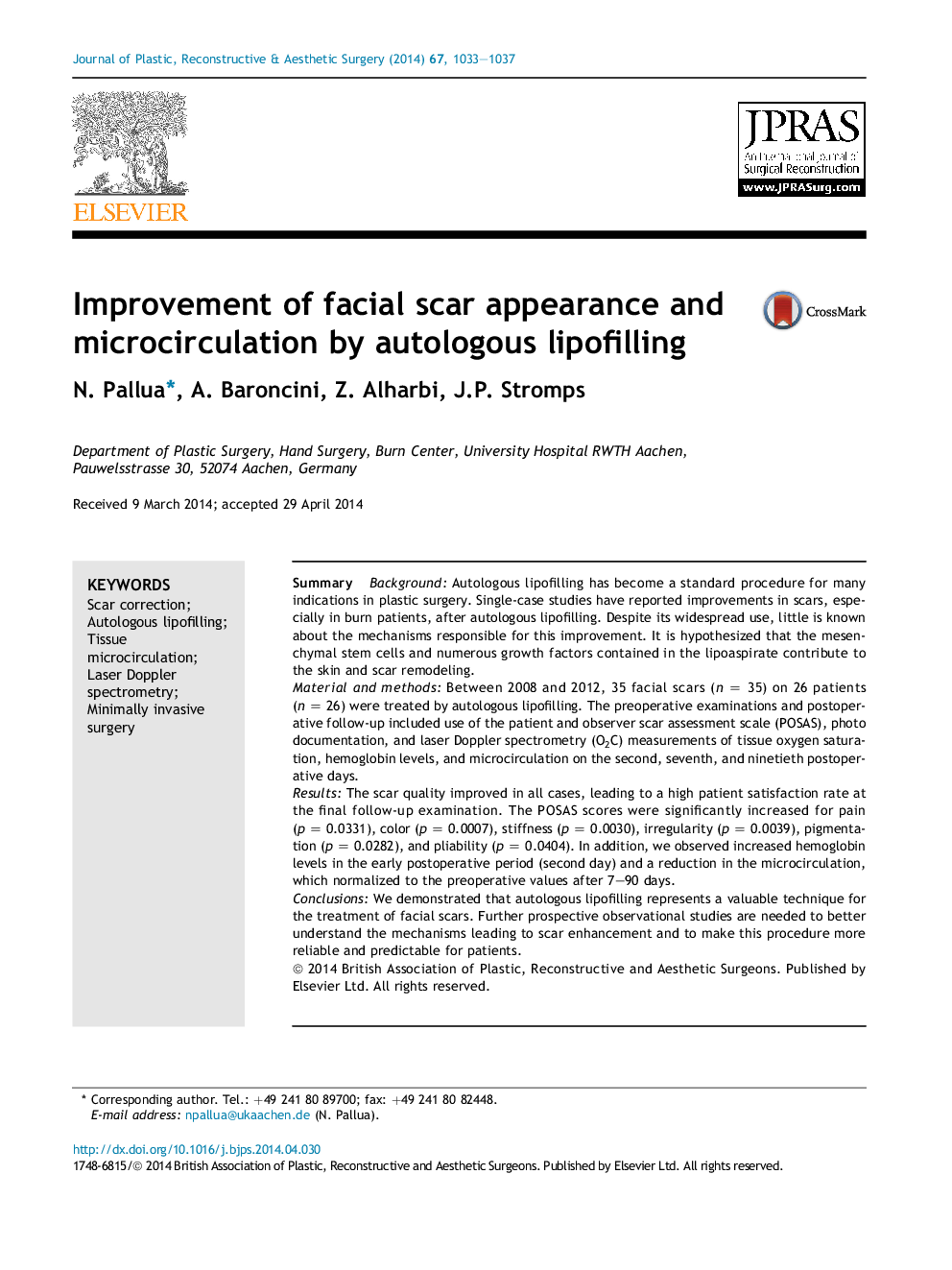| Article ID | Journal | Published Year | Pages | File Type |
|---|---|---|---|---|
| 6214702 | Journal of Plastic, Reconstructive & Aesthetic Surgery | 2014 | 5 Pages |
SummaryBackgroundAutologous lipofilling has become a standard procedure for many indications in plastic surgery. Single-case studies have reported improvements in scars, especially in burn patients, after autologous lipofilling. Despite its widespread use, little is known about the mechanisms responsible for this improvement. It is hypothesized that the mesenchymal stem cells and numerous growth factors contained in the lipoaspirate contribute to the skin and scar remodeling.Material and methodsBetween 2008 and 2012, 35 facial scars (n = 35) on 26 patients (n = 26) were treated by autologous lipofilling. The preoperative examinations and postoperative follow-up included use of the patient and observer scar assessment scale (POSAS), photo documentation, and laser Doppler spectrometry (O2C) measurements of tissue oxygen saturation, hemoglobin levels, and microcirculation on the second, seventh, and ninetieth postoperative days.ResultsThe scar quality improved in all cases, leading to a high patient satisfaction rate at the final follow-up examination. The POSAS scores were significantly increased for pain (p = 0.0331), color (p = 0.0007), stiffness (p = 0.0030), irregularity (p = 0.0039), pigmentation (p = 0.0282), and pliability (p = 0.0404). In addition, we observed increased hemoglobin levels in the early postoperative period (second day) and a reduction in the microcirculation, which normalized to the preoperative values after 7-90 days.ConclusionsWe demonstrated that autologous lipofilling represents a valuable technique for the treatment of facial scars. Further prospective observational studies are needed to better understand the mechanisms leading to scar enhancement and to make this procedure more reliable and predictable for patients.
